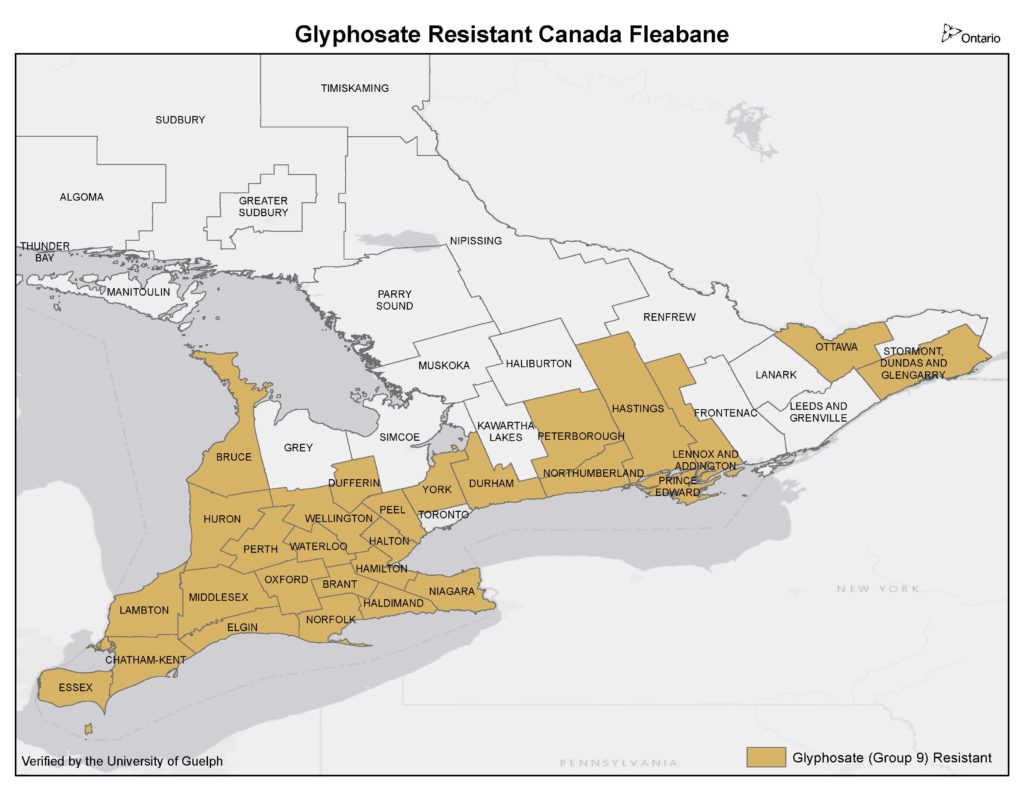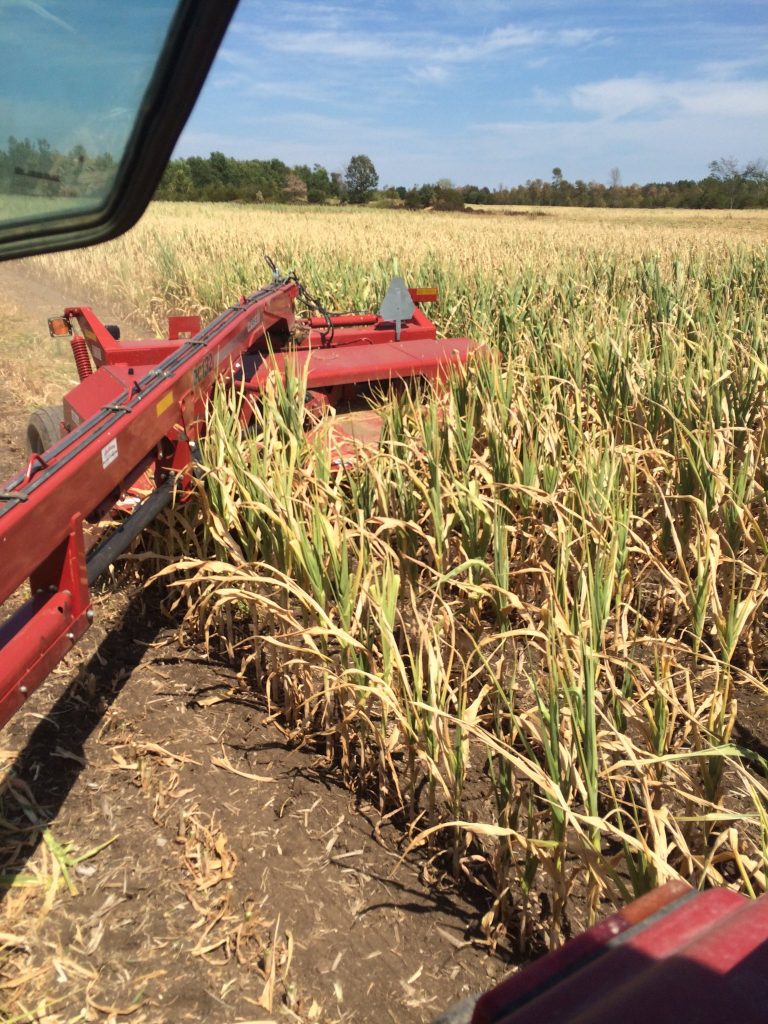Herbicide Resistant Weed Maps

This post will serve as a primary resource for the status of herbicide resistant weeds along with testing services and expertise provided to Ontario agriculture. […]

This post will serve as a primary resource for the status of herbicide resistant weeds along with testing services and expertise provided to Ontario agriculture. […]
Wednesday, March 16, 2016 at the Country Kitchen Dining Lounge, 2159 Ottawa Regional Road 31, Winchester, ON. from 8:30 a.m. to 11:30 a.m. You are invited to: Learn- About Hemp Agronomics and the State-of-the-Industry; and Vote – Regarding a levy to support a farmer-directed Promotion and Research Agency. Reuben Stone of Valley Bio Ltd., Ontario’s […]

The annual weed inspectors conference is scheduled for Thursday April 12th, 2018 at the Victoria East Golf Course, Guelph, Ontario. The cost is $75 (HST included) and includes morning snacks, lunch and resource material. The objective of this conference is to provide an overview of the Weed Control Act, administrative and enforcement duties conducted by weed […]
I’m big on “To Do Lists”. Some may even say I am obsessed with them. But they help me get things done. With the 2016 growing season approaching, it is a good time to review what the requirements are for using Class 12 pesticides (neonic treated corn and soybean seeds) in Ontario. Here is a […]

The corn nitrogen calculator app generates a recommendation for the most economical N rate for a corn field. It is based on more than 40 years of Ontario research and takes into account soil type, rotation, and the cost scenario (i.e. anticipated cost of N and price of corn). The app allows you to save […]

At this year’s SouthWest Agriculture Conference and the FarmSmart Conference, Peter Gredig (AgNition, and cash-crop farmer in Elgin County) and I demoed a bunch of different apps that we feel have value for many farming operations. Below is the list of apps (in no particular order) that were shown and the links to download them. FarmCentral […]

Cashcropper allows you to compare the net profitability and fertility requirements for different crop rotations within a given field. This app is powered by over 30 years of data on crop yield responses to different rotations from trials conducted by the University of Guelph. The app uses default yield values provided by crop insurance records […]

Did you know that windbreaks: increase crop yield, improve soil moisture distribution over fields and reduce soil loss? provide shade and shelter for livestock? minimize spray drift and odours? decrease the amount of snow drift onto driveways and roads? enhance biodiversity and wildlife habitat can generate alternative income? Windbreaks have many benefits for farmers and […]
The Revised Universal Soil Loss Equation (RUSLE2) is a software program designed to help farmers estimate the potential for soil erosion under different land management and cropping practices. The software overcomes many of the limitations of the previous USLE equation. The Ontario Ministry of Agriculture, Food and Rural Affairs (OMAFRA) has adapted the RUSLE2 for […]

I recently was asked if I knew of any good resources for farmers wishing to reduced herbicide use or transition to organic production. My favourite is called “Steel in the field – a farmer’s guide to weed management tools” Edited by Greg Bowman and published by the Sustainable Agriculture Network. If you want a print […]
“Carbon to nitrogen ratio imbalance” is a term used to describe a type of nitrogen deficiency. A field recently had pulp and paper biosolids applied. The newly planted crop looked great, until the seedlings ran out of seed reserves and started utilizing soil nutrients. The crop then turned a neon shade of yellow. What happened? […]
As of July 1, 2015, new requirements for buying and using neonicotinoid-treated corn and/or soybean seed are being phased in to allow growers to adapt to new requirements. This fall (2015) – to prepare for the 2016 growing season Required for Seed Order To purchase and plant 50% or less of your total grain corn or total soybean crop for […]

The Ministry of Agriculture, Food and Rural Affairs (OMAFRA) developed a series of tutorials to help you use the Agricultural Information Atlas (AIA). The tutorials provide step-by-step instructions on a range of topics – from the basics of navigating through the application to creating specific maps for submissions to OMAFRA. With the AIA, you can: […]

Farmers wishing to plant oats to increase feed inventories after an early corn silage harvest likely don’t need to worry about atrazine negatively affecting oat establishment and yield. It is not without risk because atrazine dissipation in the soil is slower in dry years and oats are a relatively sensitive species to atrazine. However, given the […]
Trap counts are still quite high this week in Ontario which indicates that peak flight hasn’t plateaued yet. So there is likely still lots of egg laying happening. Moths will prefer to lay eggs in later planted corn that is still in pre to early tassel stages or will find dry bean fields nearby. Just […]